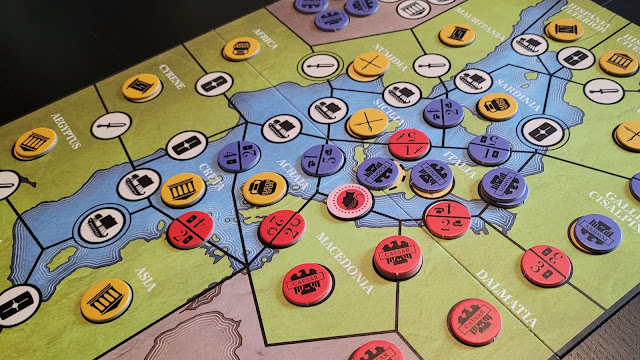The idea that they play some version of poker in the Star Wars universe is first hinted at in The Empire Strikes Back, when Han Solo responds "you lost her to me, fair and square" when Lando Calrissian asks after the Millennium Falcon. Sabacc was first given a name and described in detail by author L. Neil Smith in the novel Lando Calrissian and the Mindharp of Sharu, first published as a tie-in to the release of Return of the Jedi in 1983.
The game that Smith describes in his book is a complicated affair involving electronic cards that change their suit and value at random intervals. It seems to play like a cross between stud poker and blackjack, with a slew of arbitrary face cards that sound like they're from a tarot deck. It reads like an attempt to describe something exotic and otherworldly, the card game equivalent of the holographic chess game seen in the original
Star Wars.
The first attempt at a playable version of Sabacc came via the Star Wars Roleplaying Game published by West End Games in the 1990s. The adventure module Crisis on Cloud City called for a Sabacc game, so the publisher took the opportunity to include cards and rules to allow the roleplayers to actually play the game. I haven't been able to get my hands on a copy (copies of the module routinely sell for $200+ on eBay and rarely include the Sabacc cards) so I don't know how the game plays, but I suspect it leans towards being accurate to what is described in the book, rather than an actual playable game.
The game's prominent appearance in Solo: A Star Wars Story meant that some kind of commercial Sabacc game was inevitable, and this came in the form of the imaginatively titled Star Wars Han Solo Card Game which was later reimplemented as the souvenir Sabacc deck available at Disney's theme parks (also known as the "Corellian Spike" variant). Both versions attempt to take what we see in the film and reproduce it as a playable game. The film tries to approximate the game described in Smith's book, but does away with the electronic cards in favor of something more low-tech that will be easier to explain to the audience. Instead we have a more recognizable poker-like game played with normal printed cards, and dice to represent the random changes to the cards.

The problem in both cases is, this version of Sabacc has been "designed" by writers who need to tell a story -- the details are revealed through props and dialogue. It doesn't have to be playable or consistent, since it's not a real game that the audience will be familiar with. The commercially released Sabacc games are meant to be souvenirs first and playable games a distant second, so they are much more concerned with reproducing what we see in the film. As a result the game is pretty much unplayable, relying on a complicated and arbitrary hierarchy of hands to be "similar but different" to terrestrial poker.
When the (now sadly closed) Galactic Starcruiser attraction opened at Disney World, one of the obvious activities for guests was a Sabacc tournament. But the game would need a major overhaul if it was going to be played and enjoyed, and it received that in the form of
Sabacc: Coruscant Shift, a variation of the game that was available exclusively at the Starcruiser but is now fairly easy to find on eBay or Etsy.
Coruscant Shift drops the original Sabacc's complicated hands in favor of a simple blackjack-like game. The deck consists of 3 suits of 20 cards each, numbered 1-10 and negative 1-10, plus two 0 cards that count as all three suits. Also included are two six sided dice, one with the suits on the faces and the other with different values: -10, -5, 0, 0, 5 and 10.
The game starts with each player dealt five cards. After the cards are dealt, the dice are rolled to determine what the target value for the hand is, and what suit will be the tiebreaker. Players must then choose what cards they want to keep, playing them face down in front of them. They may then exchange their remaining cards for new ones, just like in draw poker. But here's where the game diverges: any or all of the new cards may be added to the player's existing hand, but none of the previously retained cards may be taken away. Once each player decides whether to add any of their new cards to their hand or not, they reveal their hands. Whoever's hand of positive and negative cards added together is closest to the target value wins the hand, with ties broken by the player with the most cards of the suit indicated on the die roll.
The rules included with the official Coruscant Shift deck don't include any rules for betting. In the Sabacc tournaments at the Galactic Starcruiser, each player started the game with 10 credits, and there was an ante and then a round of betting after the first two cards were dealt and then another before the final hands are revealed.
It's an excellent compromise. While it doesn't exactly reflect the game as described in the books or seen in the film, it's fairly close and is actually a playable and enjoyable game that will feel familiar to poker players but still seems like it could be from a galaxy far, far away.
Rating: 4 (out of 5) a great, easy poker-like game that puts you in the Star Wars universe -- it's easy to imagine playing this on Cloud City or at the Canto Bight casino.








